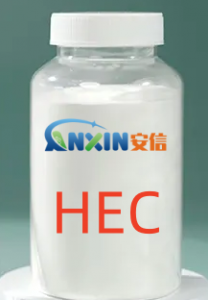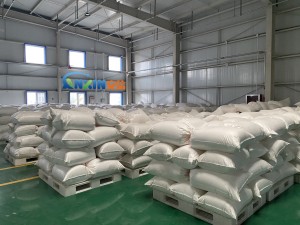Hydroxyethyl cellulose (HEC) is a non-ionic, water-soluble polymer made from natural cellulose through alkalization, etherification, and other steps. One of its most important technical indicators is its viscosity grade. In industries such as coatings, daily chemicals, oil fields, and building materials, viscosity grade is a key basis for selecting and evaluating the performance of HEC, determining the product’s thickening ability, rheological properties, and application effects.
1. What is the viscosity grade of HEC?
The viscosity grade of HEC typically refers to the viscosity of its aqueous solution under certain conditions. The industry generally uses Brookfield viscosity (2% or 1% aqueous solution at 25℃) as the evaluation standard. Models are often classified according to viscosity range, for example: Low viscosity: 300–1500 mPa·s; Medium viscosity: 1500–4000 mPa·s; High viscosity: 4000–6000 mPa·s; Ultra-high viscosity: 6000–8000 mPa·s or even higher. The higher the viscosity grade, the thicker the solution, and the stronger the film strength and adhesion to the wall, but the dissolution rate generally slows down.
2. Factors Determining HEC Viscosity Grades
2.1. Degree of Polymerization (DP)
The viscosity of HEC is closely related to the length of the cellulose backbone. The higher the degree of polymerization, the longer the molecular chain, and the greater the viscosity of the aqueous solution.
2.2. Degree of Substitution (MS) and Etherification
The number of hydroxyethyl substituents affects solubility and hydration performance. A moderate degree of substitution allows the molecular chain to expand sufficiently, improving viscosity stability.
2.3. Dissolution State
Powder dispersibility and surface treatment methods (delayed-dissolution or rapid-dissolution) affect the viscosity formation rate but do not change the final viscosity grade.
2.4. Test Conditions (Temperature, Instrument Rotor, Concentration)
Higher temperature results in lower viscosity; higher solution concentration results in higher viscosity. Therefore, standardized criteria are needed for accurate comparisons.
3. Performance Characteristics of Different Viscosity Grades
3.1. Low Viscosity HEC
Good flowability, moderate thickening effect
Suitable for: Low-viscosity systems, systems requiring high penetration
Applications: Spray coatings, detergents, printing and dyeing auxiliaries, etc.
Features: Fast dissolution speed, high system transparency
3.2. Medium Viscosity HEC
Balance between thickening ability and workability
Applications: Interior wall latex paints, water-based putties, oilfield drilling fluids
Features: Good adhesion to walls, stable film formation
3.3. High Viscosity HEC
Strong thickening properties, significantly improves rheology
Applications: Thick coatings, stone paints, adhesives, building material systems
Features: Improves storage stability, improves anti-sagging properties
3.4. Ultra-High Viscosity HEC
Used in systems requiring extremely high viscosity and thixotropy.
Applications: Oil drilling, some specialty coatings.
Characteristics: Higher cost, lower usage.
4. Significance of Viscosity Grade in Applications
4.1. Impact on Rheology and Application Performance
High viscosity improves anti-sagging and thickening ability; low viscosity ensures system fluidity and ease of application.
4.2. Controlling System Stability
Suitable viscosity helps prevent pigment and filler sedimentation and improves storage stability.
4.3. Improving Film Quality
In coatings, appropriate HEC viscosity enhances film uniformity and surface smoothness.
4.4. Cost Savings
Choosing the appropriate grade achieves the minimum addition amount and optimal performance.
5. Basic Principles for Selecting HEC Viscosity Grades
Select according to system viscosity requirements: High-solids coatings use medium to high viscosity, cleaning agents use lower viscosity.
Based on application method: High viscosity is recommended for troweling, low viscosity is suitable for spraying.
Based on price and performance balance: Higher viscosity means higher cost; should be matched to requirements.
Post time: Nov-17-2025








